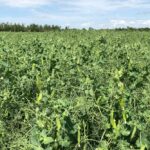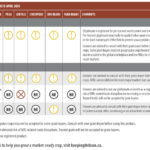MarketsFarm — As other crops make their way into the bin, fababeans across the Prairies are lagging behind. “They’re further behind this year because they were later going in,” said Dale McManus, a broker with Johnston Grains at Welwyn, Sask. Saskatchewan grows over half of Canada’s fababeans, and most are grown around the Yorkton area,













